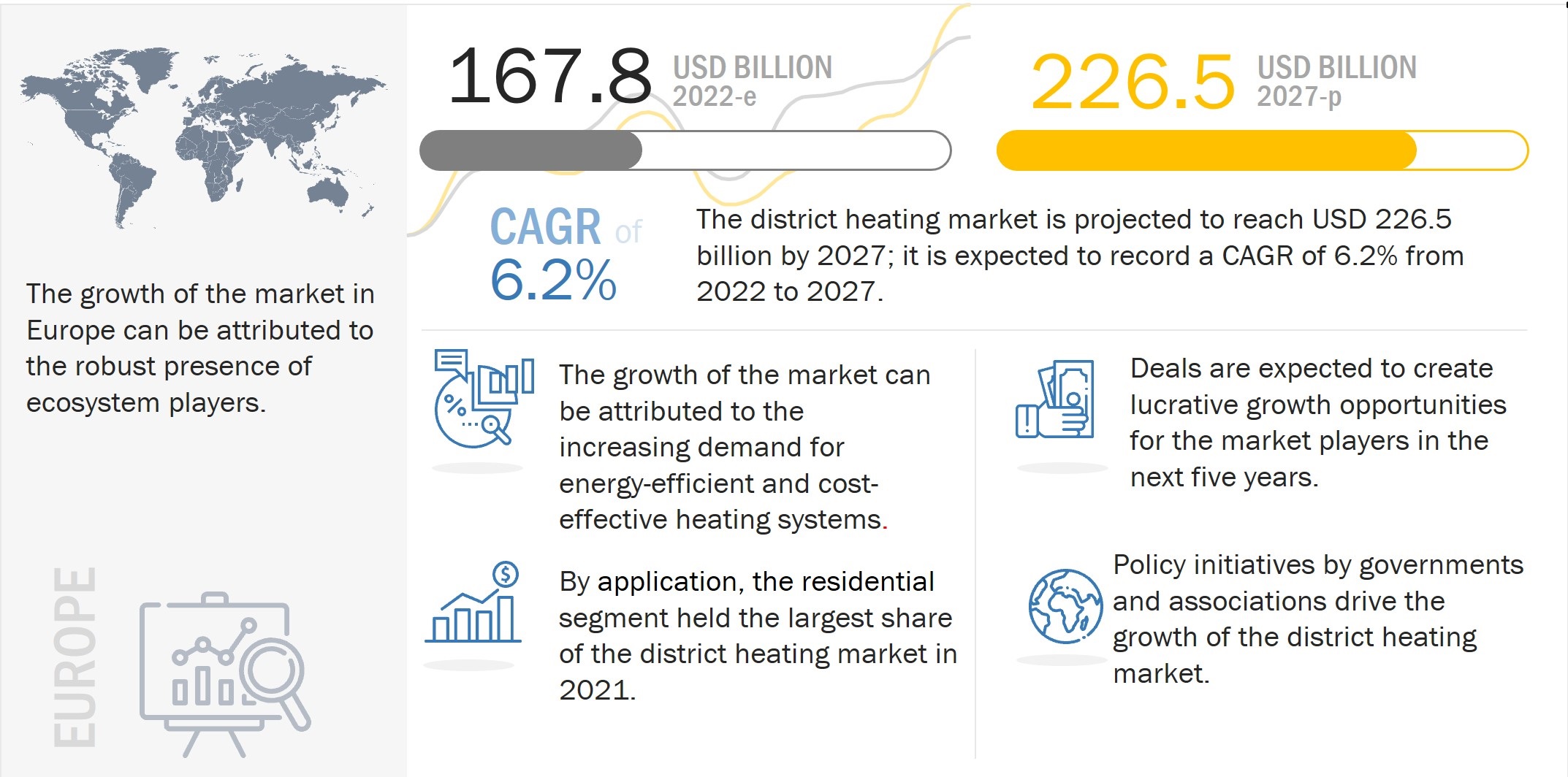According to the new market research report "RF Signal Chain Components Market by Product (Filters, Diplexers), Frequency Band (Ka Band, Ku Band), Material Type (Gallium Arsenide, Gallium Nitride), Application (Consumer Electronics, Telecom Infrastructure), and Region-Global forecast to 2027" The global RF signal chain components market size is projected to grow from USD 39.0 billion in 2022 to USD 72.9 billion by 2027; it is expected to grow at a CAGR of 13.3% from 2022 to 2027. The key factors contributing to the growth in RF signal chain components market growing investments in 5G infrastructure, increasing demand of RF components from defense sector and rising demand for smartphones. However, high cost of GaN-based RF devices is hindering the growth of RF signal chain components market. Increasing number of trade legalization due to geopolitical factors possesses a huge challenge to the industry. However, growing focus on RF equipment from automotive sector and increase in number of space programs worldwide is the biggest opportunity in the market space during the forecast period.
- Informational PDF Brochure :-
https://www.marketsandmarkets.com/pdfdownloadNew.asp?id=234495624
Browse 164 market data Tables and 59 Figures spread through 262 Pages and in-depth TOC on "RF Signal Chain Components Market and Region-Global forecast to 2027"
View detailed Table of Content here - https://www.marketsandmarkets.com/Market-Reports/rf-signal-chain-components-market-234495624.html
Increased demand for consumer electronics to drive market growth
Increasing demand for low-noise amplifiers from the smartphone industry, the rising adoption of long-term evolution (LTE) technology, the surging adoption of E band to meet the increasing bandwidth requirements of the space, defense, and wireless communication infrastructure sectors, and the growing defense expenditure of different countries globally are the factors leading to the increased adoption of low-noise amplifiers in the RF signal chain components market. Low-noise amplifiers are used in smartphones to improve the reception of weak signals and enhance smartphone data transfer rates. To enhance the mobile broadband experience for customers, telecom operators are continuously developing their 4G networks by deploying LTE-advanced technologies. Additionally, low-noise amplifiers are used as an important block in designing receivers for LTE networks.
K band use by meteorologists, police, and law enforcement agencies to boost market growth
K band frequencies range from 18 to 27 GHz with wavelengths from 1.11 to 1.67 cm. Meteorologists mainly use this band to gather cloud and weather-related information, while the police and law enforcement agencies measure the speed of automobiles. Several non-law enforcement radar sources operate in this frequency range, including automatic door openers and some blind-spot monitoring systems installed on vehicles. This has given the K band a reputation for a high percentage of false alerts, leading to recommendations for disabling it entirely to reduce false alerts.
High input power survivability eliminates requirement for power limiters
Gallium nitride (GaN) is an emerging alternative for pure silicon in the field of semiconductors and electronics due to its high brightness emissions and intensities in opto-semiconductors, high power efficiency, superior high-frequency handling capacity, and flexibility to be used along with various substrates such as silicon, sapphire, and silicon carbide (SiC). Gallium nitride is a very hard and mechanically stable semiconductor material with a wide bandgap, high heat capacity, and thermal conductivity. In September 2019, Qorvo, Inc. announced that Lockheed Martin had selected one of its gallium nitride power amplifiers to manufacture the Q-53 radar system of the US Army.
Rise in demand for carrier frequencies to provide high-quality telecom infrastructure
Increased data consumption with advancements in portable electronic technology in the form of voice and data, as well as streaming, uploading, and downloading of videos, have been witnessed. As a result, there is a rise in demand for carrier frequencies to provide high-quality wireless communication infrastructure. These carrier frequencies are expected to provide large bandwidth and micro or pico-cellular networking structure. RF signal chain components such as switches are vital in addressing these challenging requirements. Furthermore, increased data requirements challenge the capacity of backhauls. The deployment and adoption of 5G infrastructure are expected to lead carrier frequency operators to resort to microwave backhauls. RF power amplifiers are used to cater to the requirements of microwave backhauls. Power amplifiers also play a vital role in the radio front end due to their increased impact on a system's power consumption and linearity. As a result, the demand for RF power amplifiers is expected to increase in the future with the expansion of wireless infrastructure across the world.
Asia Pacific to hold the largest market share during the forecast period
Asia Pacific is a major producer of consumer electronics such as smartphones, tablets, laptops, televisions, etc. Asian countries such as China, Japan, South Korea, and India are also witnessing the commercial deployment of the 5G network. Samsung, Huawei, Vivo, Honor, OPPO, Xiaomi, and OnePlus are among the leading providers of 5G-enabled smartphones in the region. The rising demand for these smartphones is expected to fuel the demand for RF signal chain components market during the forecast period.
The key players operating in the RF signal chain components market are Qorvo, Inc. (US), Murata Manufacturing Co., Ltd. (Japan), Skyworks Solutions, Inc. (US), Broadcom (US), Analog Devices, Inc. (US). The players in this market have adopted various strategies to expand their global presence and increase their market shares.
About MarketsandMarkets™
MarketsandMarkets™ provides quantified B2B research on 30,000 high growth niche opportunities/threats which will impact 70% to 80% of worldwide companies’ revenues. Currently, servicing 7500 customers worldwide including 80% of global Fortune 1000 companies as clients. Almost 75,000 top officers across eight industries worldwide approach MarketsandMarkets™ for their pain points around revenues decisions.
Contact:
Mr. Aashish Mehra
MarketsandMarkets™ INC.
630 Dundee Road
Suite 430
Northbrook, IL 60062
USA : 1-888-600-6441
sales@marketsandmarkets.com
